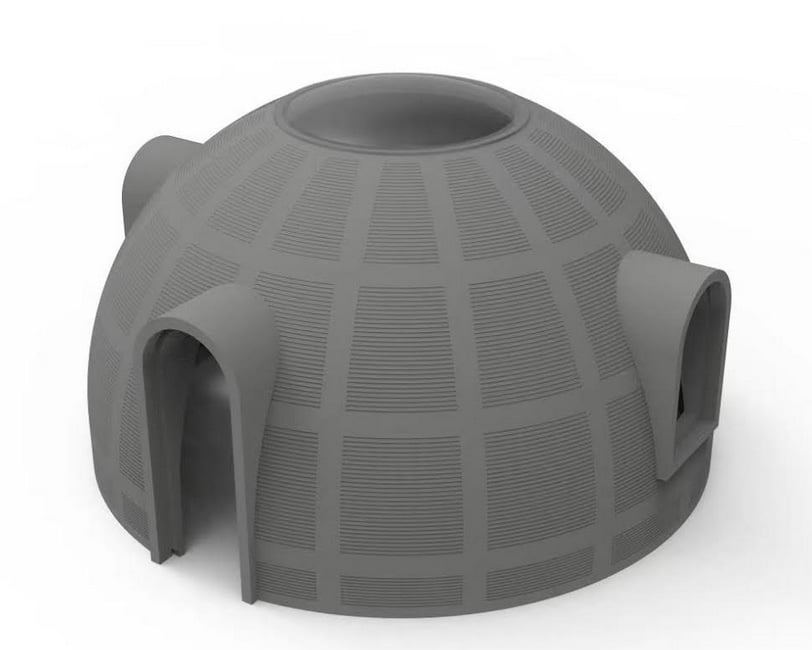Since the beginning of time, earthquakes have posed a persistent threat to human civilisations. An unexpected earth earthquake can seriously harm infrastructure and buildings, resulting in casualties and damage to personal property. Because earthquakes have become more frequent and intense in recent years, architects and engineers must create stronger building designs that can survive seismic activity. The best option for buildings that can withstand earthquakes in this situation is a dome. This is where domes shine as a fantastic option for quake-resistant buildings. In this post, we’ll look at the advantages of using domes while building in seismically active regions. So, let’s get started:
What is a Dome?
A dome is a curved architectural design that is frequently utilised as a building’s roof. Domes are often supported by walls or pillars and are composed of concrete, steel, or other building materials. They are generally symmetrical along their vertical axis and have a round or polygonal base. Since they have been in use for so long, domes may be seen in a wide variety of civilisations and architectural designs. They are frequently employed in secular constructions like government buildings and museums as well as in religious ones like churches, mosques, and temples.
A dome’s design offers a huge, open interior area without the need for columns or other vertical supports, making it the perfect choice for usage in structures with open, spacious floor plans. An additional benefit of a dome’s curving shape is greater structural stability and resilience to calamities like earthquakes and strong winds.

“Earthquake Engineering Study: Round Dome Design Proven to Withstand Seismic Forces”
The 24-foot-diameter dome’s wood structure was tested on a shaking table in April 2005 at the University of British Columbia’s Earthquake Engineering Research Facility, which is part of the civil engineering department. Even when fully loaded, the table representing several seismic scenarios showed no evidence of damage. The outcomes show how strong and long-lasting this kind of construction is, and they suggest that it may be utilized as an alternative to conventional concrete structures in earthquake-prone regions.
The success, in the opinion of the researchers, can be related to the dome’s form. The most horizontal forces that dome experiences during an earthquake occur at its base, according to Dr. Jack Moehle, the study’s principal investigator. A dome’s round design means that it has no weak areas where the pressure may cause it to collapse, and it “promotes concentric failure rather than the more calamitous crumbling failure that is frequent with rectangular geometries.”The greatest kind of construction for shock resistance is a dome. This study provides evidence that they can endure powerful earthquakes.
Strength and Durability of Domes
Building using domes in earthquake-prone locations has a number of advantages, including their strength and longevity. Domes are circular buildings composed of a variety of materials, including glass, steel, and reinforced concrete, a sturdy and long-lasting material that can withstand seismic activity, is used to build domes. The dome’s distinctive form also aids in equally dispersing stress throughout the surface, lowering the danger of collapse during an earthquake.
First of all, because domes equally transmit stress throughout their surface, there are no weak places that may readily collapse the building during an earthquake. Because of this, domes are more resilient to collapsing than conventional rectangular structures.
Shock Absorption- Domes’ capacity to absorb stress is another crucial feature. The dome’s curving design functions as a shock absorber, dispersing the earthquake’s impact across a wider region. This lessens the chance of damage and lessens the total effect of the earthquake on the building. Additionally, reinforced concrete, a sturdy and long-lasting material that can survive seismic activity, is frequently used in the construction of domes.
Low center of gravity- Domes has a low center of gravity compared to towering buildings, which is why Domes are also less likely to topple over during an earthquake because of their low center of gravity. This is due to the dome’s weight being equally distributed throughout its surface, which creates a solid foundation capable of withstanding seismic activity. Additionally lowering the likelihood of collapse during an earthquake is the low center of gravity.
Versatility- Domes are flexible structures that can be customized to fit any style, shape, or size. As a result, they are ideal for a wide range of buildings, including homes, schools, hospitals, and commercial ones. They are also ideal for earthquake-resistant construction due to their versatility. Due to their adaptability, domes may also be customized by architects and engineers to meet the unique requirements of a structure, guaranteeing that it is completely prepared to withstand seismic activity. Please read on to learn about Glass Domes-The future of homes: https://domespaces.com/glass-domes-the-future-of-homes/




